#musicology
Photo

My Chemical Romance at Qudos Bank Arena, Sydney, Australia on March 19, 2023 | Josh Groo for Musicology
#gerard way#corporate gerard#unkillable#josh groom#rica.archive#mcrsydney#march 2023#2023#reunion tour#blood#musicology
703 notes
·
View notes
Text
The world in which we usually live, the world of our everyday existence—and not only of our everyday existence—is a world of visible things. The sense of sight has constructed it; the eye is our guide in it. Into it we integrate the impressions of the other senses; our speech, our actions, our thinking, are largely formed and oriented upon its pattern. One might almost suppose, and many do suppose, that the visible world is our entire milieu. We integrate even the audible into the frame of the visible—with one exception: music. Only in music, the art of tone, where the audible is, as it were, alone with itself, comes to itself, is the frame of the visible world broken through. Music does not integrate itself into the world of the eye.
Victor Zuckerkandl, Sound and Symbol: Music and the External World (translated by Willard R. Trask)
#quote#Victor Zuckerkandl#Zuckerkandl#music#sound#acoustics#music theory#musicology#senses#world#reality#seeing#hearing
32 notes
·
View notes
Text
Honestly one of my biggest pet peeves is when people make up obviously wrong facts about historical figures in order to be funny, as if they weren't real people and therefore extremely silly in real life. It really degrades the entire experience of history as study of humanity first and foremost: these people (especially classical composers) are the same as us, and it's frustrating to see people imply otherwise.
Also most of the time it's really boring, especially in comparison to the truth. Name one joke about any composer that could be as funny as the fact that Chopin and Liszt literally HUNTED BERLIOZ while he was being depressed over his weird crush in the middle of a field. Name one joke about Tchaikovsky's sexuality that could be as funny as the fact that he found his boyfriend's finger really ugly and fixated more and more on it as the relationship got worse. I could go on.
#anyway I'm a history nerd and I'm perpetually angry about this#history#music history#musicology#humanities#dark academia#classical music#music#hector berlioz#fryderyk chopin#franz liszt#pyotr ilyich tchaikovsky#iosif kotek
40 notes
·
View notes
Text
youtube
Okay, so this is admittedly one of the craziest projects I've ever thrown myself into. I did it, though. I broke down "Almighty Bhunivelze" from Lightning Returns.
37 minutes. 37. I can't believe I pulled this off.
If you've ever had questions about where's and when's and why's regarding "Almighty Bhunivelze", this is the video for you. The comment section has the entire list with timestamps for the cameos.
#lightning returns#final fantasy xiii#final fantasy 13#almighty bhunivelze#musicology#musicblr#music analysis#bhunivelze#Youtube
41 notes
·
View notes
Text
Music(ology) headcanons! Part 2
My friend @klaraflamez and I have been writing a shared story based upon the wizard101 AUs we made independently. Things go somewhat off the rails, and so these headcanons that we made for Music absolutely do not work for canon, which is part of why I'm making this post separate.
An overview of our AUs:
In both Corrupted Spiral (my AU) and the Cleaved AU (Klara's), the Spiral learned so heavily on its dependency upon its Wizard that it led to the Wizards' demises. In CS, before Arc 4 could properly begin, Nora lashed out in fury, sick of being Nothing but a title and weapon, and abandons the Spiral. In Cleaved, Scarlet was killed in the final fight of Lemuria, a 1v8, abandoned and alone because the Spiral assumed she would have handled it.
The main characters of the next generation after the two Wizards (~0-5 years after Nora's departure and 25 years after Scarlet's death) each realize that even though they're not The Wizard, they still have a duty to serve the good of the Spiral.
Overall there's a major theme of destiny and responsibility not falling on just one person's shoulders. The Wizard is not the only Paradox, and the primordial magics of Light, Shadow, and Music are no longer reserved for the Wizard and the gods. They become proper schools, integrated with the other ten (7 playable schools + 3 Astrals).

I've written and come up with spells for the Music school, as one of the characters I'm writing ends up as the Scion of Music, while Klara's writing the revamped Shadow and Light schools because her OCs become the Scions for those.
More details on Music as its own school in CCSAU (both lorewise and mechanicswise because i am gamerpilled), and all the spells themselves plus their explanations (where I derived inspiration from) are under the cut!
Music is the magic of creation. 'Outgoing' mechanics are the name of the game. It is a major hitter like Fire and Storm, but also has access to heals like the more defensive Life magic that came from the Song of Creation. Music's greatest weakness is that it is a major glass cannon, with no spells in its repertoire able to mitigate incoming damage.
The reason Music is tied to Fire and Storm alongside Life lorewise is because the Scion of Music first studied Fire and Storm magic alongside Musicology, before Music was its own school. Our Scion shaped Music as much as Music shaped him.
Now onto the spells themselves!
MAINLINE (primarily ATTACKING) SPELLS:
1 pip - Lyrebird - 90-130 damage. Based on the lyre instrument, and also a nod to Lyra, the fanon Music school tree in the Cleaved AU.
2 pip - Trombun - 220-260 damage. A pun on trombone and bunny.
3 pip - Earworm - 500 damage over 3 turns. Colloquially, earworms are catchy bits of song that just stay in your head and WON'T GET OUT, which is the inspiration for making this spell a pesky overtime. Also, taken from the Earworm/Brainworm mobs in Empyrea.
4 pip - Melodeer - 465-525, + 20% heal OR damage blade to self. Melody + deer. Here we begin to see some utility and niche poke its way into spells so that they're not plain and pure damage. Also, just to balance Music against the other 'hitter' schools a little bit more, it doesn't get a 4-pip AoE.
5 pip - Volta Bracken - 400 damage AND 400 health to self. A reference to volta brackets (an element in musical notation), with language nodding at Storm and Life magic (volt as in electricity, bracken as in a kind of plant). Yes this spell is an objectively better version of Beary Surprise. I hate Beary Surprise so much why is the bear both anthro and nude. why does he fucking smile like that. why can i see the whites of his eyes. WHY THE HUG?
6 pip - Resonance - 525-610 damage + remove all blades on 1 target. A single-target version of Myth's dreaded Earthquake.
7 pip - Horschestra - 700 damage to all enemies. Your classic 7-pip AOE. Horse + Orchestra, taken from a song in the Homestuck OST because it made me laugh tbh.
8 pip - Revivace - 1200 Heal to all allies. Name derived from Revive (synonym of Rebirth) and Vivace (musical mood). Meant to be a parallel to Life’s Rebirth spell, since Bartleby is the closest thing to a Music school tree in CS. However Rebirth gives an absorb-shield, which counts as temporary HP even if the spell heals someone to full, while Revivace has no extra defense.
9 pip - Crescendo! - 100 damage turn 1, then a DoT for 200, 300, then 400 damage, to all enemies. Crescendo is a musical term for "get gradually louder"
10 pip (Azteca) - Ceramic Drake - 1000 damage to 1 target, then 625 damage to all enemies over 3 rounds. The first of Music's spells that take on aesthetics derived from the world they're learned in. It takes inspiration from the tlapitzalli, an Aztec flute-like instrument made of ceramic.
5 pip + Shadow (Darkmoor) - Rehubution - 810 damage + 25% Music trap to all enemies. The spell's name comes from the word Retribution and the rehu, an instrument made by the Māori of Aotearoa. All of the canon Darkmoor spells are actually Khrysalis themed, and @chrono101 (now deactivated) made a really cool post about how the Hoppers had Aotearoan references that I remembered while coming up with this post. The effect in combat is derived from Fire from Above before it was nerfed and then slaughtered.
6 pip + Shadow (Polaris) - Luphilymn - 1260 damage, +1 turn to Damage over Times (DoTs) on enemy and +1 turn to Heal over Times (HoTs) on self. Luphilim + Hymn.
4 pip + Shadow (Mirage) - Spirit of the Groove - 900 damage, divided between targets (like all other Mirage spells). This spell is less a reference to something Miragian, and more a nod to a character who had a major impact on the Scion of Music's development. Ceramic Drake, Luphilhymn, and the upcoming spells of Ramalong and Jungle Drum Jam also are nods to characters that the Scion of Music was greatly supported by.
X-pip + Shadow (Karamelle) - Ramalong - 220 damage per pip. A blend of sing-along and the candy rams. This spell is an X-pip because there are a handful of songs/lullabies about counting sheep. Count your pips up!
6 pip + Shadow (Lemuria) - Jungle Drum Jam - 850 damage to all enemies, +40% Music blade AND +40% heal blade to self. Taken from this once-off moment in Lemuria where Bantam says that he and the Koolakamba just casually use advanced musicology for the sake of boogieing.

The effect is taken DIRECTLY from the far superior path of the Life Lemuria spell, Lord of the Jungle, before KI nerfed it to bits. I am so fucking mad about the nerf. I fucking liked having a decent shadow AoE on my Life and now it's useless again. <- had to get my gamer rage out sorry.
1 pip + Fire pip + Storm pip (Novus) - Tempo Inferno - 800 damage, gambit 1 blade into a DoT for 500 over 4 turns, gambit 1 trap into a HoT for 500 HP over 4 turns. Tempo refers to the speed of a musical piece, and both pieces of this spell's name are nods to Storm and Fire as well (Temp- for tempest, Storm's most iconic spell, Inferno for fire). This spell would also hold visual reference to that one sidequest about how clocks don't work on Novus.
1 pip + Death pip + Myth pip (Wallaru) - Crab Grave - 575 damage to all enemies. A reference to the extinct Juggernaut crabs of Wallaru, the still living Tasmanian giant crab, and the legendary Crab Rave meme. Given that all of the Wallaru spells' archmastery pips are the ones backwards from the Novus spells' pips, it made sense to make Crab Grave's pips the roshambo opposite to Tempo Inferno's. Myth is the roshambo opposite of Storm, and Death is the roshambo opposite of Fire. Don't believe me on Death and Fire? Look at how Balance's Novus gear has 3 variants that pair Ice-Life, Storm-Myth, and Fire-Death as its archschools. No I don't know why the Balance Wallaru spell is Death-Storm instead of Death-Fire I don't get it <- gamer raging again.
UTILITY SPELLS:
There are some utility spells that every school gets access to, simply changed per school: the basic Blade and Trap and Shield are simply named Music Blade, Music Trap, and Music Shield, because they're standardized for all the schools (Except Ice Shield, which is actually Snow Shield, for whatever reason?). Though, to put a wrinkle into things and keep with Music's theming as hyper-outgoing, Music Trap is the only ward spell (a spell that affects incoming damage rather than outgoing) that Music gets permanent access to. Music Shield would be TC only. Traps get special treatment because of Maulwurf von Trap existing. I like the guy don't @ me.
Then there's the utility spells that are just about the same for each school but with unique names. These include:
the 2 pip damage bubble - Circle of Fifths, after an important element in music theory. +25% damage to all outgoing Music spells AND +25% to all outgoing Music heals (the boost to healing alongside damage is unique to Music. Life gets Circle of Thorns (+25% damage) and Sanctuary (+60% healing) as two different bubbles.)
the 4-pip critical and pierce bubble - Acoustic Arena, +15% Music critical and +20% Music pierce.
the dispel - Mute
the Taunt/Pacify - Soloist, Taunts the enemy for 2 turns, making you the only target they can hit. Yes, having a glass cannon school gain taunt is a bit poor in game design, typically you want your glass cannons to have some form of Pacify so that they're not killed as quickly, but thematically Music becoming a loud center of attention makes more sense to me.
the complementary triad shield - Eclipse Shield, -70% incoming Light and Shadow damage. The parallel to Storm's Thermic Shield (-70% Fire and Ice) or Death's Dream Shield (-70% Life and Myth). Like Music Shield, because this spell is both a staple piece of utility that every school should have access to and a defensive ward that goes against Music's school identity, it would only exist as a treasure card.
The level 75 minion from The Professor - Baronness Webberfeld - 5 pips, summon a minion of Music. She is a reference to Baronness Elberfeld, a minor character from the Sound of Music. Because I had to get a reference to that in. Because I am normal about Maulwurf von Trap and his source media.
And then we get to the unique utility spells, the gimmicks that gives Music its identity in-game or give it thematic support.
Tune Up - 0 pips, +20% accuracy to the next outgoing Music spell. A parallel to Storm's Lightning Strike (which back in my day only gave +10% accuracy, not +25%). Music spells have a base accuracy of 70% like Storm, so the accuracy buff would be greatly needed at lower levels.
Bangsnap! - 2 pips, Confuse or stun each enemy for 1 turn.
Gurdy-hurdy - 3 pips, Confuse or stun each enemy for 2 turns.
Bangsnap and Gurdyhurdy go together, I'm thinking of them being from the Grizzleheim and Wintertusk spell quests at level 35 and 55. Bang snaps are small explosives that only release a loud sound but do no damage. Gurdy-hurdy is a reference to another in-game moment.

(The hurdy-gurdy, un-reversed, is a kind of musical instrument.)
And, yep! Myth is no longer the only school with the Confusion mechanic! Yippee! (I can hear the gamerbro players scream.) This is because before Music became a standalone school in CCSAU, Klara had the idea that, the way some Wizard101 spells are musicological despite not being in the school of Music, some Pirate101 abilities are inherently musicological as well, namely Blast of Discord.

And this is an ability that our Scion of Music was able to learn before Music became an independent school, so rather than take that ability away from him, we decided to incorporate it into Music's entire repertoire.
Leitmotif - 2 pips, 305 HP to 1 target, then 305 more HP 3 turns later. A leitmotif is a snippet of a musical melody that comes back later in a piece or in another piece (Toby Fox, one of my favorite composers, uses leitmotifs to the MAX.)
Sonatyr - 4 pip, 650 Health + 30% Healing Blade to all. Satyr + Sonata. Does less health than Life's Satyr because I don't want to completely upstage Life, but giving an extra blade to everyone is useful. It buffs every healer, and would count for any blade-based gambits/secondary effects.
Adagio - 1 pip, +1 turn to a HoT on an ally or to a DoT on an enemy. Adagio means for a piece of music to slow down.
Allegro - 1 pip, -1 turn to a HoT on an enemy or to a DoT on an ally. Allegro means for a piece of music to speed up.
Adagio and Allegro are spells that go together. If they were to be implemented in-game, I'd have them be learned at the same time. Having a spell that does different things depending on whether it's on an ally or enemy is really interesting to me, though it would be a pain in the ass to code.
Encore - 5 pips, force your target to cast the same spell for the next 2 turns. Encore, of course, means "to play again". Taken directly from Pokemon because why not?
Baton Pass - X pips, give your blades to an ally, universal and at half-value, (1 pip per blade). Also derived from Pokemon because why not? The half-value gimmick comes from Bantam's cheat of "I'll be taking that, thanks!" Where he replaces a blade you cast on someone else with a universal blade of half value. The devs intended that cheat to be annoying and discourage buffing one player to the max, but it's actually a REALLY HANDY mechanic when used correctly. The half-value blade would count as a unique blade that therefore stacks with whatever other blades your ally has.
Perfect Pitch - 1 pip, +20% accuracy to all allies. Perfect pitch is defined as the ability to tell exactly what note(s) a sound is without any reference. This spell would be copy-pasted over from Life, and also derived from the Pirate101 abilities Call to Arms and Esprit de Corps, which both boost your team's accuracy. (Esprit also gives dodge, a stat that I cannot find any way to translate into Wizard101 that wouldn't be a defensive ward, which Music does not do). The animations for those two powers feature musical instruments (a drum and a trumpet), which makes it feel very musicological to me and therefore fitting for Music itself.
Fortissimo! - 2 pips, +15% Critical chance to all allies. Fortissimo is music speak for "BE FUCKING LOUD!" This spell is derived from the Pirate101 abilities Discipline and Enduring Discipline, which (are supposed to) give +5% and +10% critical chance to all allies. (I have heard that the abilities that purely increase critical chance rather than another stat simply don't work because Pirate101's code is made out of silly string, but that's besides the point). There are very few spells that affect critical, so it's a niche that Music could fill in if it wanted to.
This probably isn't even enough utility, Wizard101 has a SURPRISING amount of spells it throws at you. It's such an in-depth game. I love it. I am normal about Wizard101.
Also, Klara was absolutely AMAZING and drew some of the spells!
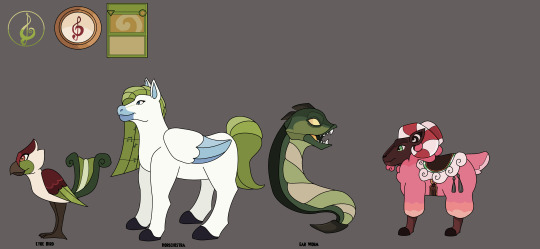
#wizard101#headcanon#musicology#i wrote this all through yesterday up until like. 12:30 am and then wrote some more this morning.#i got incredibly rambly and jargony and for that i am sorry#i am unfortunately a gamer and i know wiz mechanics#i have THOUGHTS#i am. so normal. <- lie#corrupted spiral#cleaved au#CCSAU#leah speaks :3
29 notes
·
View notes
Text


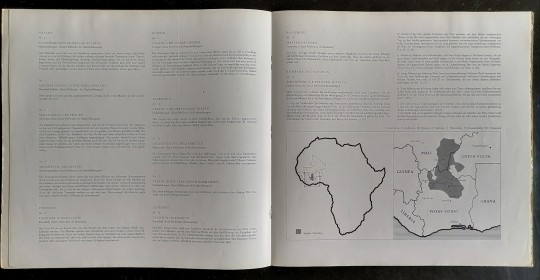

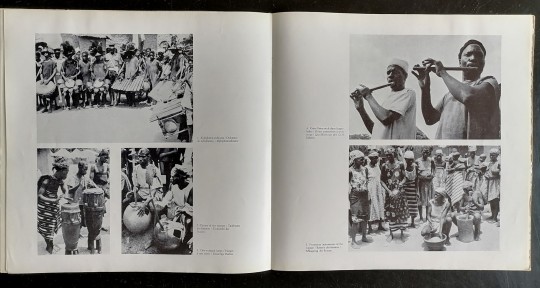


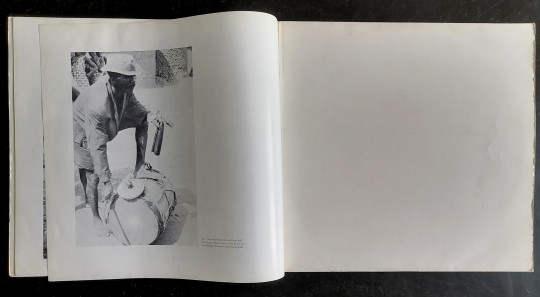


[rec. Hugo ZEMP]
"An Anthology of African Music, vol.8 : The Music of the Senufo"
(LP. Bärenreiter-Musicaphon. ? / rec. 1962/65) [ML/CI/BF]
youtube
#hugo zemp#1965#africa#mali#ivory coast#burkina faso#traditional#folk#musicology#ethnomusicology#senufo#records#Youtube
13 notes
·
View notes
Text
Halbrand’s Theme: The key change
So. It seems to be common knowledge now that Halbrand’s theme is an inversion of Sauron’s theme. People talk about it all the time. What I haven’t seen, though, is people talking about the key change in Halbrand’s theme.
undefined
youtube
We start out in E minor, establishing the leitmotif on a Hardanger fiddle (a Nordic instrument, which symbolizes the Southlands.) New instruments are introduced, and after a while, we get the leitmotif again but with horns, symbolizing a more heroic or regal aspect of the character. When we reach the end, we get the leitmotif on a Nordic instrument again (pretty certain it’s a nyckelharpa). Seems reasonable, right? Start simple, go big, finish by going back to the start. Here’s the thing, though: we’re now in D minor.
Key changes have always been a thing. In pop music/modern music, you tend to go up a key in the last refrain to get some extra oomph at the end. In classical music, it’s more common to slip into the dominant key (five notes up), but you often go back to the original key again for the ending. So, why am I writing this, if key changes aren’t that big of a deal?
Halbrand’s theme goes down a key, and it doesn’t go back. When you look at it from a musicology point of view, it’s just... strange. Why go from E minor to D minor? Why end in D minor? When I realized this, I was just, “Where are we going, Bear? Why are we going down, Bear?”
My first thought was that it could symbolize Halbrand’s inevitable descent. He starts out as a heroic figure (fiddle -> horns), but he will fall from grace (horns -> nyckelharpa in a lower key). This could be the case, but I also realized that there could be a second reason to this.
undefined
youtube
Sauron’s theme is mostly atonal. The melody doesn’t follow a key, but the strings and percussion that keep the uncomfortably inconsistent rhythm going are repeating a Db (or C#, depending on what you want to call it) over and over again. So... half a note down from D minor.
Is that where you were taking us, Bear? Is that why Halbrand’s theme is suddenly descending in that highly nontraditional key change? Is it to symbolize Halbrand’s fall from grace in general, or did you intentionally lead us to Sauron?
Anyway, Halbrand’s theme has a weird key change. I have no further conclusions. Thank you and you’re welcome, I guess.
¯\_(ツ)_/¯
#halbrand#rings of power#the rings of power#trop#sauron#music#musicology#bear mccreary#meta#yes i have a thing for music and yes i have a minor in musicology and i am not afraid to use it for nonsense like this#Youtube
99 notes
·
View notes
Text
I’m sitting here baffled because I got into my dream program for graduate school with full funding, and the fact I’m gonna go to graduate school without student debt to fucking study my little loserboy emo music is fucking insane.
I don’t even know how to react seems like a dream and they’re gonna say sike or something 
So grateful for Tumblr and my fellow emos that inspired me to write the honours capstone thesis that allowed me to get into graduate school and actually live my dreams
It’s all because of the queer bitches on this goddamn website that I’m even here in the first place and now you guys helped me get into grad school
I love every single one of you!!!!

#I am actually a loser boy emo scholar#this feels like a dream#I’m shitting myself about this#emo music#music scholar#musicology#grad school#mcrblr#mcr#emo
11 notes
·
View notes
Text
THIS IS THE PERFORMANCE. IT’S A PIECE BY JOHN CAGE WHERE THE PERFORMER(S) ON STAGE SIT(S) QUIETLY. IT’S A STATEMENT PIECE ON “SILENCE” AND AMBIENT NOISE, AND WE ARE PART OF THE MUSIC!

#musictheoryaugmented#music theory augmented#musictheory#music theory#music history#musichistory#musicology#conservatory#music majors#music major#musicmajors#musicmajor#music students#music student#phd#college#academia#gradschool#university#grad school
273 notes
·
View notes
Text

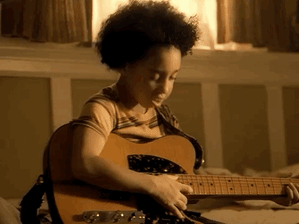
Musicology Originally released 2004
7 notes
·
View notes
Photo

Music expresses the metaphysical to everything physical in the world, the thing-in-itself to every phenomenon.
- Arthur Schopenhauer
#schopenhauer#arthur schopenhauer#quote#music#musicology#philosophy#aesthetics#beauty#sound#femme#metaphysics#culture
59 notes
·
View notes
Text
In music, consonance and dissonance are categorizations of simultaneous or successive sounds. Within the Western tradition, some listeners associate consonance with sweetness, pleasantness, and acceptability, and dissonance with harshness, unpleasantness, or unacceptability, although there is broad acknowledgement that this depends also on familiarity and musical expertise. The terms form a structural dichotomy in which they define each other by mutual exclusion: a consonance is what is not dissonant, and a dissonance is what is not consonant. However, a finer consideration shows that the distinction forms a gradation, from the most consonant to the most dissonant. In casual discourse, as German composer and music theorist Paul Hindemith stressed, "The two concepts have never been completely explained, and for a thousand years the definitions have varied". The term sonance has been proposed to encompass or refer indistinctly to the terms consonance and dissonance.
Wikipedia
#quote#music#sound#consonance#dissonance#Paul Hindemith#music theory#musicology#sonance#beauty#resonance
58 notes
·
View notes
Text
One thing that jazz has going for it above classical is that they shout out the names of the soloists on stage and everyone goes crazy. They should introduce that into classical concerts. Soloist plays a cadenza and the conductor just screams ITZHAK PERLMAN and everyone cheers. This post is about Corrado Giuffredi's performance of An American In Paris.
#I'm kind of serious#classical music#music#musicology#jazz#george gershwin#itzhak perlman#corrado giuffredi#an american in paris
18 notes
·
View notes
Text
youtube
A thorough analysis of Hope's Themes (and related soundtracks), and a couple of unexpectedly impressive hair flips thanks to the utilization of a tin foil tiara.
29 notes
·
View notes
Text
Music(ology) headcanons! Part 1
My headcanons fall under two main umbrellas: stuff that goes along with canon as is, and stuff that works specifically in the AU that I and a friend have been working on together for the past 9 months. I wanted to put the AU specific stuff in this post also but this post is long enough as is, so this post will just be based on the headcanons that I think are canon compliant.
I believe there is a subtle distinction between Music and Musicology.
Music is as primordial as Light and Shadow. If Light is the magic of order and existence as it currently is, and Shadow is the magic of chaos and change and entropy, the Music is the magic of creation, of making the new. Music is the harmonizing force that keeps Light and Shadow in balance.

(Quest: The End of Days, the quest at the very end of Empyrea in which the Wizard becomes the Divine Paradox)
Meanwhile Musicology is Music as mortals such as Maulwurf von Trap and the Old One are able to study and use, the way that all of the 7 main schools and the Astral schools are the subforms of Light magic most ordinary people can learn.
Because it does attempt to tap into such primal magic, Musicology is often unstable, which is why Maulwurf is so destruction-prone.

(Quest: Life is Like..., the now-retired Karamelle prequest that hints at Maulwurf)

(Quest: A Foundry Most Foul. Maulwurf used Musicology to defend himself from some Schismist soldiers... with extra consequences.)
However, with the right tools, even mortal Musicology can be INCREDIBLY powerful. The Old One was able to use his World Synthesizer to weave pieces of Spiral Worlds together, a smaller version of Bartleby singing the Song of Creation to weave all the worlds of the Spiral together into one cohesive universe after the First World split apart.

(Quest: Small World After All. The quest where the Arcanum debates what to do about Lemuria)

(Quest: Something Wicked That Way Goes, the quest where the Wizard goes to unformed Novus)
Note now music is lowercase here despite Nothing being capitalized. The music isn't divine Music, but rather Musicology, because Novus was made out of Dasein and the Old One's World Synthesizer in particular.
So, Musicology as the mortal form of Music. How does it manifest, aside from Maulwurf's arson and the World Synthesizer?
I think some spells are inherently Musicological despite falling under the canon schools. I think @astral-schools put this well in this post of theirs + response to my tags:

Spells that use the ideas of (lowercase) music in their theming. The techniques, how they manifest, their animations.
I wanted to list out every Musicological spell ingame but unfortunately the list of every spell in the game is like 70% beastmoon spells (exaggeration) so I never get far in my deep dive before getting bored of combing through the spells. Off the top of my head, the following spells are Musicological spells to me:
Imp (an imp playing a fiddle causes the damage. The spell animation has music notes fly at you)
Satyr (a satyr plays the pan pipes to heal you)
Earthquake (vibrations through the ground. music and physical vibration/frequencies go hand in hand to me. physics!)
Myth Imp (same as with regular imp)
Snake Charmer (the charmer uses their song to control the snake and make it deal damage)
Banshee (screams and noise as damage)
Sirens (sirens' songs are what lure sailors to their doom. Music notes fly at you in the animation as well)
Every Karamelle spell (Maulwurf says that the spell is made by the musicology syncopating with our inherent magic. Syncopation is a musical term that refers to when a melody intentionally dances around the rhythm of the piece.)
Every Lemuria spell (because Lemuria was made with Musicology)
Every Novus spell (because, like Lemuria, Novus was made with Musicology)
In a sense Music and Musicology is somewhat similar to how we see Shadow magic in-game. Pure Shadow magic is divine and unstable (which is why we suffer Backlash when using the pure Shadow spells from Khrysalis), but other spells are Shadow-enhanced, using Shadow magic alongside one of the other 7 schools to keep it more stable.
22 notes
·
View notes
Text

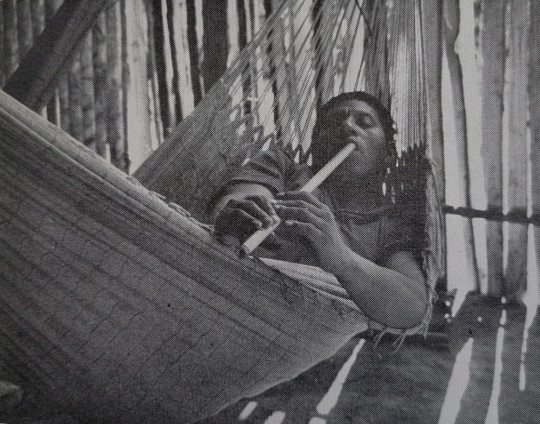


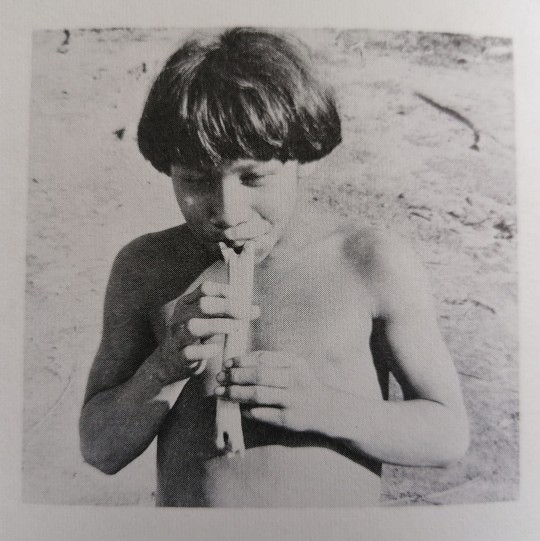



[rec. W. COPPENS, B. BRÄNDLI, J.-F. NOTHOMB]
"Music of the Venezuelan Yekuana Indians"
(LP. Folkways rcds. 1972 / rec. 1912/62-70) [VE]
youtube
#yekuana#1962#venezuela#amazonia#traditional#musicology#ethnomusicology#walter coppens#barbara brandli#jean francois nothomb#records#theodor koch grunberg#Youtube
57 notes
·
View notes